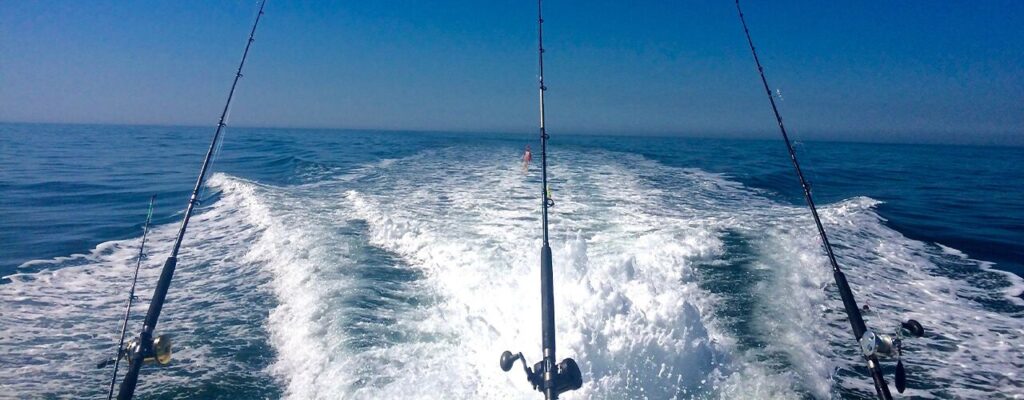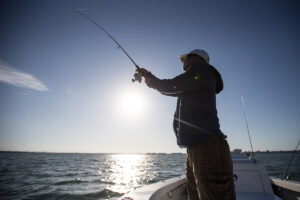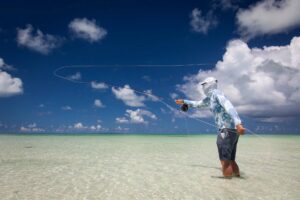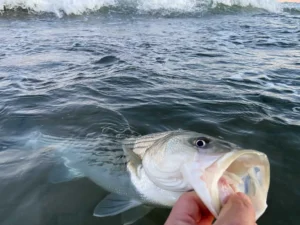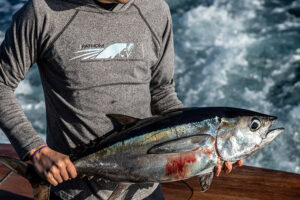If you’re just getting into saltwater fishing or looking to branch out, one of the first questions you’ll face is: Should I fish inshore or offshore?
Both offer incredible opportunities—but they’re very different experiences in terms of gear, species, strategy, and even budget. In this guide, I’ll break down the key differences, the pros and cons of each, and help you decide which saltwater adventure suits you best.
What Is Inshore Fishing?
Inshore fishing refers to fishing in waters within a few miles of the coast—generally less than 30 meters (100 feet) deep. This includes bays, estuaries, flats, jetties, and coastal shorelines.
Common species:
- Redfish
- Snook
- Speckled trout
- Flounder
- Tarpon (seasonal)
- Sheepshead
Pros of Inshore Fishing:
- More accessible—often doable from shore, kayak, or a small boat
- Generally calmer water
- Shorter trips = less fuel cost
- Great for beginners or quick outings
- Consistent action, especially on the flats
Cons:
- Smaller average fish size compared to offshore
- More affected by tides and wind
- Crowded spots in popular areas
What Is Offshore Fishing?
Offshore fishing (a.k.a. deep sea fishing) takes place several miles from shore, often 20+ miles out, in deeper waters and sometimes on the open ocean. You’re usually targeting larger, migratory species.
Common species:
- Mahi-mahi (Dolphin)
- Tuna
- Wahoo
- Marlin
- Grouper
- Snapper
- Kingfish
Pros of Offshore Fishing:
- Larger, more powerful fish
- Chance for trophy catches
- Spectacular variety of species
- Less fishing pressure in open water
- More adventurous, “big game” feel
Cons:
- Requires a larger, seaworthy boat
- More expensive (fuel, equipment, charters)
- Trips can take all day
- Weather can change fast—safety matters
- Can be physically demanding
What About Gear Differences?
Inshore:
- Light to medium tackle
- Spinning reels
- Soft plastics, jigs, live shrimp
- Flats boats, skiffs, kayaks
Offshore:
- Heavy-duty rods and reels
- Baitcasting or trolling setups
- Live bait rigs, deep divers, trolling spreads
- Center consoles, sportfishers, charters with outriggers and GPS/radar
Which One Is Right for You?
Ask yourself:
- Do I want short, fun trips or epic full-day adventures?
- Do I prefer finesse or power?
- Am I fishing solo, with family, or on a guided charter?
- What’s my budget and access to gear or boats?
If you’re new to saltwater fishing, starting inshore is a smart move. It’s more forgiving, easier to access, and you’ll still get plenty of action. If you’re craving an adrenaline rush and willing to invest time and money, offshore can be incredibly rewarding—especially when you feel that first screaming run from a tuna or wahoo.
Final Thoughts
Both inshore and offshore saltwater fishing offer unforgettable experiences. Whether you’re stalking redfish in ankle-deep flats or chasing billfish 40 miles out, there’s something magical about saltwater angling.
My advice? Try both. Each has its own rhythm, its own beauty—and once you get a taste, you’ll likely fall in love with both.
Have a preference or a wild story from inshore or offshore fishing? Drop it in the comments—I’d love to hear it!

